León, Guanajuato 作者: 来源: 发布时间:2021-05-26
1. Population and Area
Pop: 1,630,094 (metro)
Area: 1219.67 km2
lev: 1815 masl
León location in Mexico within the State of Guanajuato
https://goo.gl/maps/EfQZZqkLPzPLYMXL7
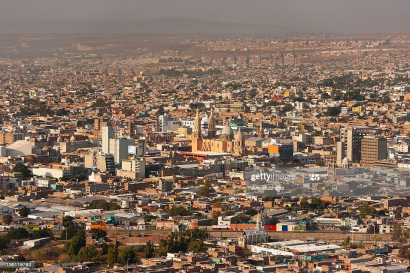
2. Natural geography
Vegetation
The natural vegetation is mainly made up of a thorny forest in the valley, the mesquite (prosopis laevigata) being the main exponent. However, the natural area is practically extinct, giving way to agricultural and livestock activities. In the hills around the city, a subtropical scrub is located with species such as the casahuate (Ipomoea arborescens), the varaduz (Eysenhardtia spp.), The huizache (Acacia Schaffneri) and other xerophilic species. In the high parts of the mountains to the north of the city there is an oak forest.
Orography
The municipality in its northern part has mountainous foothills belonging to the Sierra de Guanajuato, which locally bears the names of Ibarrilla, Comanja and Lobos, considered a Natural Ecological Reserve. And the southern part belongs to the region of the fertile valleys of the Bajío.
The most important elevations of the municipality are the Cerro del Gigante, with 2,884 meters above sea level. and the Cuatralba table at 2,800 meters above sea level. In the city are notable the hills of the Hilamas, the Cerro Gordo with its Educational Institutions, housing areas and radio communication antennas; and Cerrito de Jerez, an area inhabited since pre-Hispanic times.
Weather
Köppen Classification: Oceanic Subtropical Highland Climate
The subtropical highland variety of the oceanic climate exists in elevated portions of the world that are within either the tropics or subtropics, though it is typically found in mountainous locations in some tropical countries. Despite the latitude, the higher altitudes of these regions mean that the climate tends to share characteristics with oceanic climates, though it also tends to experience noticeably drier weather during the "low-sun" season. In locations outside the tropics, other than the drying trend in the winter, subtropical highland climates tend to be essentially identical to an oceanic climate, with mild summers and noticeably cooler winters, plus, in some instances, some snowfall. In the tropics, a subtropical highland climate tends to feature spring-like weather year-round. Temperatures here remain relatively constant throughout the year and snowfall is seldom seen.Without the elevation, many of these regions would likely feature either tropical or humid subtropical climates.
The Köppen Climate Classification subtype for this climate is "Cwb". (Oceanic Subtropical Highland Climate).
The average temperature for the year in León is 67.3°F (19.6°C). The warmest month, on average, is May with an average temperature of 73.9°F (23.3°C). The coolest month on average is January, with an average temperature of 59.7°F (15.4°C).
The highest recorded temperature in León is 103.1°F (39.5°C), which was recorded in May. The lowest recorded temperature in León is 27.5°F (-2.5°C), which was recorded in December.
The average amount of precipitation for the year in León is 25.7" (652.8 mm). The month with the most precipitation on average is July with 6.2" (157.5 mm) of precipitation. The month with the least precipitation on average is February with an average of 0.2" (5.1 mm). In terms of liquid precipitation, there are an average of 73.5 days of rain, with the most rain occurring in July with 15.6 days of rain, and the least rain occurring in March with 1.2 days of rain.
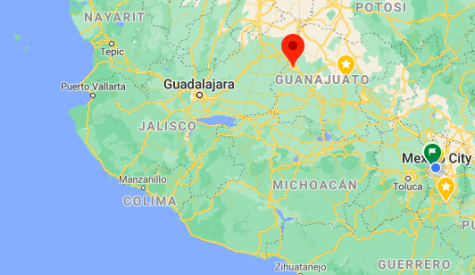
Getting there and around
By plane
Leon is served by Del Bajío International Airport (BJX). You can take a plane from Mexico City (around $300USD), it's just a 45 minute flight with some scenery, nothing otherwordly. The taxi from the airport to central León will be around $30 USD, and a 40 minute drive. There are also nonstop flights to various US cities like Detroit, Atlanta, Los Angeles, Chicago, Oakland, and San Antonio thru Aeromexico, Volaris, or Interjet plus United Airlines and American Airlines operate nonstop flights from Houston and Dallas respectively. It is a relatively modern airport that was built in anticipation of increased traffic as Mexico City de-industrialized due to the toxic smog levels in the 80's.
By bus
From Guanajuato Go to the Guanajuato bus station (Central de Autobuses), from there you can either take 1st or 2nd class buses run by the same company but under different brand names. The difference between the two classes is minimal. As of Oct, 2016 2nd class buses depart every 20 minutes and first class (Primera Plus) depart on a schedule. Costs are around 50 and 70 pesos respectively and the trip takes around 50-60 minutes.
The bus will drop you off in central Leon but a few kilometers from the city center. To get to the center, you have to find a local bus which goes there. Line 74 is one of the lines that go there, but the bus stop is a few blocks away, in order to find it you will have to ask locals to direct you as it's not marked in any way. Once you find the bus, the cost is 9 pesos, and will take you to center in 10 minutes.
You can also rent a car to travel to Tula from Mexico City, Pachuca or some other nearby city, but you’d probably have to go to deliver it back to that city or some other close one.
One-way rentals are ideal if you are planning to fly out of a different city from the one you arrive in. They are a convenient way to take a longer, more extensive road trip and not have to back-track. On the flip side, some trips may make more sense to do as a round-trip drive. Compare availability and rates between various options and see what works best with your plans.
https://www.enterprise.com/en/road-trips/things-to-consider-when-renting-a-car-for-a-road-trip.html
Get around
Bus
Integrated Transportation System (ITS) (Sistema Integrado de Transporte in Spanish) refers to the development and implementation of a Bus rapid transit system named “Optibús”. Since September 28, 2003 the Integrated Transport Optibús began to operate despite an existing need for a subway system "Metro", which originally was planned construction with two lines.
The system was the first of its kind in Mexico. Leon being the first city in the country with a BRT system, before it was implemented in Mexico City as Metrobús and Guadalajara as Macrobús.
Optibús System The current route system is divided into four categories. These are:
Trunk routes: They consist of eight main lines that cross the city from end to end. The buses are also known as Orugas (caterpillars in Spanish) due to its articulated midsection. They have capacity for 175 passengers. The Optibús transit system consists of 52 stations located in the central area of the main avenues of the city.
Feeder and Auxiliary Routes: These are urban bus routes that were integrated into the regular system, as a stop as they have one or more transfer stations. Are identified by the letter A (Feeder route / yellow decals) or X (Auxiliary route / blue decals).
Conventional Routes: These routes that circulate through most of the city and are distinguished by having the corporative colors from its owners: orange, red, pink, purple and green.
Suburban Roads: Roads are circulating outside or on the city edge communities as Comanjilla, Duarte, Loza de los Padres, La Hacienda, etc.
There are currently three permanent transfer stations (San Jeronimo, Delta de Jerez and San Juan Bosco), two micro-stations (Santa Rita - Parque Juarez), which are the endpoints for trunk routes, feeder routes and auxiliary routes. Passengers at these stations are allowed to transfer without cost from any of these lines.
In addition, as a control measure, the “PagoBús” system has been instituted; this is an electronic card system that allows users to streamline their access to stations and bus and thus save money. There are 2 types of cards: Preferential and General, cost rates with 50 and 15% lower total cost.
Taxi - Taxis are a fairly convenient and safe way to get around the city. Be sure to call only verified taxi service. Before you get in a taxi make sure you know the way.
The city's bicycle paths are extensive. Leon is one of the most bicycle-friendly large cities in Latin America and has an extraordinary track record in active transport, keeping the biking and walking share above 39% of the total trips, one of the highest values in Latin American cities.
Uber is expanding rapidly across Mexico and now offers services in cities across the country, including: Mexico City, Toluca, Cuernavaca, Puebla, Querétaro, León, Aguascalientes, San Luis Potosí, Guadalajara, Monterrey, Hermosillo, Tijuana, Mexicali, and Mérida. Uber has been adding Mexican cities to its network every year, check for availability when you arrive at your destination in Mexico.
Cabify is developing also and currently operates in cities including Mexico City, Toluca, Monterrey, Puebla, Querétaro and Tijuana. Check for availability in the city you are visiting.
The services offers people with smartphones a way to book a cab through a mobile app for a pre-agreed price. Fares are comparable with Sitio type cabs (see above), and sometimes trade at a premium to this when local demand increases.
https://www.mexperience.com/transport/taxi-travel-in-mexico/#51
https://www.travelsafe-abroad.com/mexico/leon
3.GDP
GDP: 18 M USD
4. Industries Characteristics
The city of Leon is well known for its leather and footwear industry. However, in the last decade the city has also developed an important economic activity in the automotive industry.
Industrial parks
About 70% of all shoes made in Mexico come from León and the surrounding area. There are also chemical industry, leather, transportation, plastic, polymer, box companies. There is also cluster of automotive industries, including a General Motors plant in the nearby municipality of Silao. León is also national headquarters of the bank Banco del Bajío owned by Salvador Oñate, and is the headquarters of regional divisions of banks such as Banamex, HSBC etc.
Many companies dedicated to the development and maintenance of software from other states of the Mexican Republic and even from other countries have seen the city of León as an interesting area to invest in computer technologies and complement other industries such as automotive and electromechanical.
Demand for careers in computer systems engineering, computer science bachelor's degrees, and information technology management engineering have increased in demand in recent years. And it is that with the success of smartphones, the geographic location of the city in the country and in Latin America, the metropolis of Bajío has made it a strategic point to invest in other areas very unrelated to footwear, generating direct and indirect jobs.
The American company UST Global dedicated to providing solutions and services E2E settled on the León-Cuerámaro highway as a result of an agreement with former President Vicente Fox in order to support entrepreneurs and leaders in Mexico. Other local companies such as Infoware have trained personnel to maintain national banking leaders such as Banamex, maintaining their credit and Afores systems. Guadalajara companies have seen a market in the city that is increasing and requiring a greater number of experts in the area of computer systems, for this reason they have invested in human capital to meet these demands by creating local branches, such is the case of the company ISI that through outsourcing provides such services. Other companies offering human resources for the flourishing of this industry are PRODESIS and e-Nfinito.
The leather and footwear industry
According to the Municipal Historical Archive, the manufacture of the first shoes dates back to 1645, at that time the shoemaker craftsmen worked with rudimentary tools, already by 1872 and with the establishment of the first factory, specialized machinery began to be used.
With the arrival of the railroad, the city of León was a pioneer in the export of this product to the United States. From the 1920s many of the workshops became large companies. Currently, the city of León produces more than 72% of the national industrial chain in this area Currently, in Guanajuato there are 3,394 economic units associated with the shoemaking sector, and 85 percent of them are micro, small and medium-sized enterprises.
Customs facility
A newly built facility within GTO Inland Port's premises speeds up the logistics process. Clearing customs in a border city or seaport is no longer a requirement for companies located in GTO Inland Port; now they use this very convenient facility.
PILBA
Parque Industrial León - Bajío (PILBA) is a first-class industrial park in the State of Guanajuato, located in the Federal Highway 45 corridor, where the most dynamic automotive and auto parts conglomerate in the country is located, same as it has been strengthened by the presence of international plants such as Volkswagen, Mazda, General Motors, Toyota, Honda and others. Within this region, there are 60% of the country's population and 70% of industrial companies. PILBA is anchored by the French company Michelin. Artha Capital develops the infrastructure of the park, including the supply of water and natural gas, a fire system and a water treatment plant.
https://www.artha.com.mx/pilba.html#mas_info
5. Touristic sites
Nuestra Señora de la Luz Cathedral
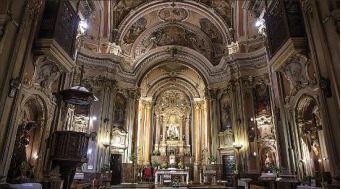
The main church is called the Cathedral Basilica of Our Lady of the Light and is the seat of the Archdiocese of Leon. Construction of the church was begun in 1746 by the Jesuits and is a combination of Baroque and Neo Classic architectural styles. Construction was halted only eight months after it began when the Jesuit order was expelled from Mexico by the Spanish Crown. The Obregon family, however, took over its construction, continuing into the 19th century. The Archdiocese of Leon was created in 1864, with its first bishop, José María de Jesús Diez de Sollano y Dávalos helping to get the towers and cupola completed as he chose the church as the seat. It was finally completed and consecrated on 16 March 1866. Pope Benedict XVI officiated a mass here in 2012.
Guanajuato Cultural Forum
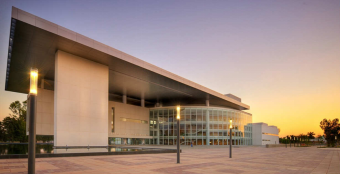
The Guanajuato Cultural Forum, located in the downtown area of León, is the perfect place for a fun and unforgettable family day. With attractions ranging from the cultural to the playful, this place has it all.
Here you will find something for everyone, the complex is made up of multiple spaces, know what they are like and what is in each one.
State Central Library. The most impressive in the Bajío, this public library has collections of topics such as history, art, and information about Guanajuato. It is divided into several rooms such as: children, audiovisual, Internet and Braille.
Museum of Art and History of Guanajuato. The most impressive museum in the state. It has an amazing collection that ranges from Ancient Greece to the 20th century. Discover audiovisual installations that will teach you everything about episodes in history such as the Cristero War. It also includes an area for children.
Garden of Sculptures. Imagine a space where you can be walking among jacarandas, Indian laurels, ash trees and tabachines and, suddenly, you find an imposing sculpture that invites you to think.
Bicentennial Theater. This avant-garde venue was intended as a temple for artistic expressions such as opera, theater, dance, and live classical music. Its design is modern but the structure is a tribute to ancient theaters, which prioritized acoustics and human scale.
https://admin.cityexpress.com/blog/forum-cultural-guanajuato-de-leon
Calzada Arc
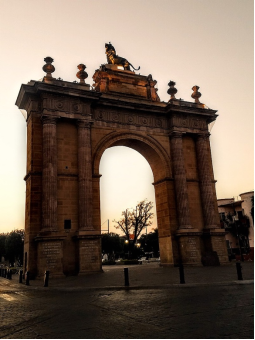
The Triumphal Arch of the Calzada de Los Héroes, better known as "Arco de la Calzada", is the representative emblem of the city of León.
The first sketch that we have of the road dates from the year 1883, in which Eng. Pedro Tejada León was asked to make a "Triumphal Arch" but it did not last long, for this, the material that would be used would be wood, cardboard, plaster among others. The engineer did so, and the result was more than satisfactory.
It produced such a taste in people that they decided to do it again, and by 1896 it was made of quarry, with the idea that it would represent the city and that it would be shown as an entrance to the city, on Francisco I. Madero Street (previously called Real de Guanajuato).
The lion sculpture made of masonry, bricks, rod, mixed and modeled with cement, the same that first moved to the Benito Juárez Park and now is at the entrance of the León Zoo, was added in 1943 at the request of Don Francisco Lozornio Castillo, industrial benefactor of the city, by the bricklayer of the Expiatory Temple Daniel Herrera Jiménez.
On March 16, 1958 the bronze lion 3 m long was added, it was made by the sculptor Humberto Peraza Ojeda at a cost of 45 thousand pesos, at the initiative and donation of 10 thousand pesos from the bullfighter from León Antonio Velázquez "Corazón De León ”, being Municipal President Irineo Durán Pérez (1958-1960). The Lion was exhibited for several days in the Municipal Palace and then mounted on the Arco De la Calzada.
https://es.wikipedia.org/wiki/Arco_de_La_Calzada
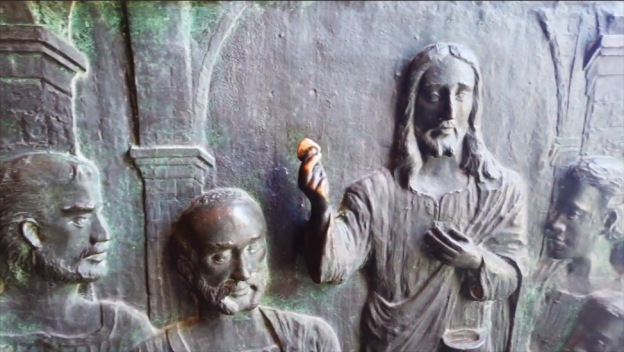
Things to Do in Leon, Mexico 2019
https://youtu.be/mOG4MqI_bQ0
6. History and Culture
Colonial Time
The first armed Spanish presence in the territory of the future Mayor's Office of León dates back to February 2, 1530, when Nuño de Guzmán and his Tarascan allies forded the Lerma through Conguripo, calling it the river "de Nuestra Señora".
Its agricultural and livestock colonization began in 1546, with stays granted by the Governor of Nueva Galicia, Vázquez de Coronado to the Spanish Rodrigo de Vázquez and Juan de Jasso. When the Chichimecas were invaded, they maintained a state of war against the Spanish. These, faced with this situation, requested the viceregal authorities to found a larger town to have better protection.
This is how Juan Bautista de Orozco founded the town of León on January 20, 1576, making the layout of it and installing its first town hall, fulfilling the order of Viceroy Martín Enríquez de Almanza of December 12, 1575, which in the Valley of Our Lady was founded, with the name of León, place of origin of the Viceroy, a settlement.
The indigenous people were grouped into two communities close to the then town, Otomí in San Miguel, Purépechas, Mexica and peaceful Chichimecas in Coecillo. Those that over time came to be recognized as peoples.
Mayor's Office 1580
In the year 1580 León is elevated to the category of Mayor's Office, assigning a wide territory to its jurisdiction, from the Sierra de Comanja to the Lerma River. What included in addition to the extension of the current municipality, the now neighboring municipalities of San Francisco del Rincón, Purísima de Bustos (Purísima Concepción), Cd. Manuel Doblado (San Pedro Piedra Gorda), Huanímaro, Abasolo, Cuerámaro and Pénjamo. The western limit of the Leon mayor's office was the border between the kingdoms of New Spain and New Galicia.
In 1787, the old mayor of León remained as a subdelegation dependent on the Guanajuato Intendancy. The inhabitants of the town of León during the colony suffered plagues (1643), droughts (1712-1714) and famines (1714, 1786), and periodic floods.
Independent times
In June 1830 it rose to the rank of city with the official name of León de los Aldama. During the process of the Independence movement, it suffered economically, socially and politically. When the Guanajuato mines were abandoned due to the war, many workers settled in León. Agriculture was the main economic activity until the 18th century, when handicrafts and shoemaking began to compete with it.
The post-revolution years were one of prosperity and material progress, as well as population growth. Economic development was evident in the extraordinary industrial, agricultural and livestock exhibition of 1923.
Modern León
Currently in its streets the old buildings of the colonial era contrast with the modern architecture and wide avenues that configure the image of a city in continuous progress.
The city of León is known as the footwear capital of the world due to the fact that a large number of factories that produce shoes and leather goods of excellent quality are concentrated here, the fame of which has exceeded the country's borders.
León has modern roads and an international airport that easily connects it with the main cities of the country and abroad; it also has the León Poliforum, which is the most modern venue in the country for organizing congresses and exhibitions, with first-rate facilities. These elements have promoted business tourism and conventions, guaranteeing professional support in services and technology.
The city of León is located close to 6 states of the republic that represent a potential market of approximately 30 million people.
7. Contact Information
City Mayor: Héctor López Santillana

Contact number: +52 (477) 788 0000, ext. 1200
Govt. Office Address: Plaza Principal S/N, Centro Histórico, León, Gto., C.P. 37000
Twitter: https://twitter.com/hlsantillana
FB: https://www.facebook.com/hlsantillana
Website: https://www.leon.gob.mx/leon/h-ayuntamiento.php
